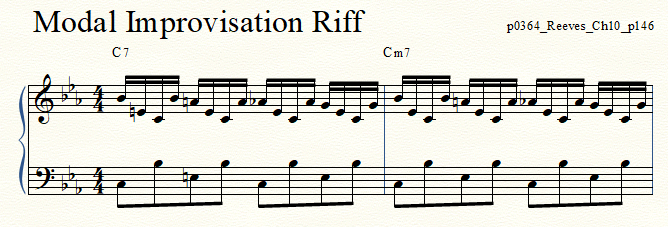This is my first posting about a specific technique I use in my practice and I am still in the process of defining how I would like to organize and integrate this type of posting among my websites and YouTube channels as well as how I would like to streamline the process of generating and tagging the associated videos and content so that it will be accessible and understandable by my readers - so please bear with me as I work this out in the coming days, weeks, months, and years.
As I was recording some video that I will likely be using to create my initial trailer for my YouTube channel I was flipping through Creative Jazz Improvisation book by Scott Reeves. Chapter 10 is entitled Harmonic Structures and Coltrane Substitutions and I got to thinking, "What's a Coltrane Substitution?" so I started reading. The chapter begins with, "The harmony or chords for most jazz compositions can be classified as one of the following types:
- Modal - A composition in which all the chords last at least four bars, each chord usually comprising a complete section or phrase. A vamp between two or three chords whose scales have the same notes may be considered as one modal area (e.g., Cm7 to F7, or Cmi to DbMa7b5).
- Chord Changes - ..."
and he goes on to list five different types. I didn't make it past the first as I started to play the chords he mentioned just to see what they sounded like. Actually, I played different chords - Cm7 - F7 - Cm7 - Db7. Initially I played the all the chords except the F7 in root position as block chords in the left hand and this is demonstrated on the YouTube video A Modal Improvisation. Later during that same session I modified that to be a broken chord pattern where I played the root, 7th, 3rd, 7th as 8th notes against a 16th note sequence an octave higher in the right hand that emphasized a chromatic walkdown from the 7th to the 5th with the root and 3rd on the inside. You can listen to a demonstration of the progression on the YouTube video Modal Exercise - p0364. I have it notated (at this time) as the dominant 7th and minor 7th forms but it can be expanded upon to use with major 7th or even half or fully diminished 7th chords if desired. Initially, on the unedited copy of the video (which I have not posted) I used a major 7th and went both down and back up but later on changed it to be only descending.

The focus of this exercise for me was to maintain a consistent fingering pattern in all twelve keys with a four note chromatic walkdown from the 7th to the 5th over both dominant 7th and minor 7th chords. I haven't put the fingering in the notation example but it should be 5-2-1-5-4-2-1-5-4-2-1-4-3-2-1-3 for the right hand sequence while the left hand should be obvious. As you will see in the associated video the are places where I don't quite feel comfortable with the pattern in some keys but that is the goal and I will likely remember it and be able to execute it reasonably well when I hear in my head that it might be an appropriate pattern to throw in some improvisation over one of these chords.